Horizontal Directional Drilling: Minimizing Impacts, Maximizing Benefits
Posted October 30, 2023
What is Horizontal Directional Drilling?
Horizontal directional drilling (HDD) is a trenchless method for installing underground pipelines, cables, and conduits, offering unparalleled precision and flexibility. Originating in the early 1960s, HDD has evolved into a widely embraced technology in the construction industry. The HDD method involves drilling a borehole at an angle from a surface location using a steerable drilling rig and pulling the pipeline or conduit through the borehole. The technical aspects of HDD are complex and require careful planning and execution to ensure the successful completion of a project. When executed properly, HDD offers sustainable improvements, including reduced surface disturbance, lower construction costs, and minimal impact on the environment and our communities.
Design Challenges
Entry and Exit Angles
One of the most critical design parameters in HDD is the entry and exit angles. The entry angle refers to the angle at which the borehole is drilled from the surface location, while the exit angle refers to the angle at which the pipeline or conduit emerges from the borehole. These angles are crucial in determining the curvature of the borehole and must be carefully evaluated to ensure the pipeline or conduit can be pulled through without excessive bending or deformation.
The angle of entry and exit also affects the stress levels exerted on the pipeline during the installation and operation phases. The selection of these angles in HDD designs depends on several factors, including the soil conditions, the length of the borehole, the diameter of the pipeline or conduit, and the equipment used. It is generally advisable to maintain entry and exit angles at the minimum possible values to minimize the bending radius of the pipeline or conduit. They must be carefully evaluated to ensure the pipeline or conduit can be pulled through the borehole without excessive bending or deformation.
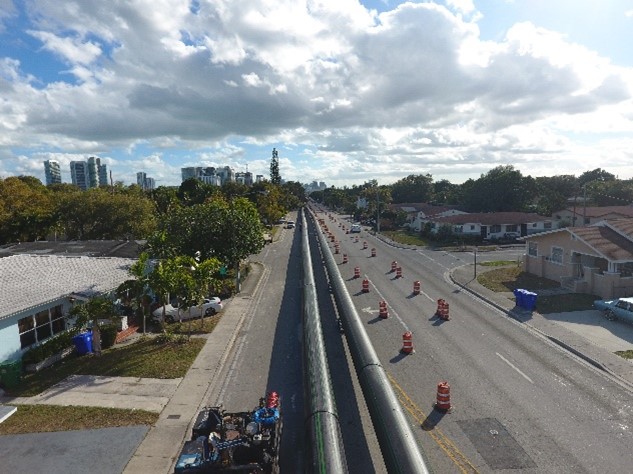
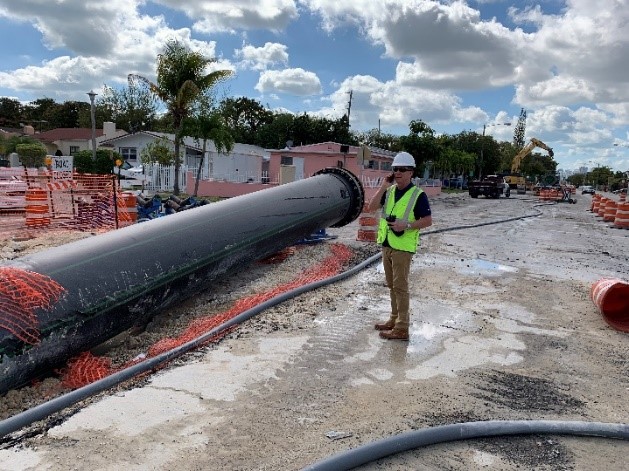
Soil Conditions
Soil conditions significantly impact the entry and exit angle selection in HDD designs. Soil type and properties affect the resistance during drilling and pulling and the curvature of the borehole. Hard and dense soils, such as rock formations, may require higher entry and exit angles to achieve the desired curvature. On the other hand, soft and loose soils, such as sands and clays, allow for lower entry and exit angles, as they offer less resistance to drilling and pulling forces. However, entry and exit angles that are too low may produce issues with fracking.
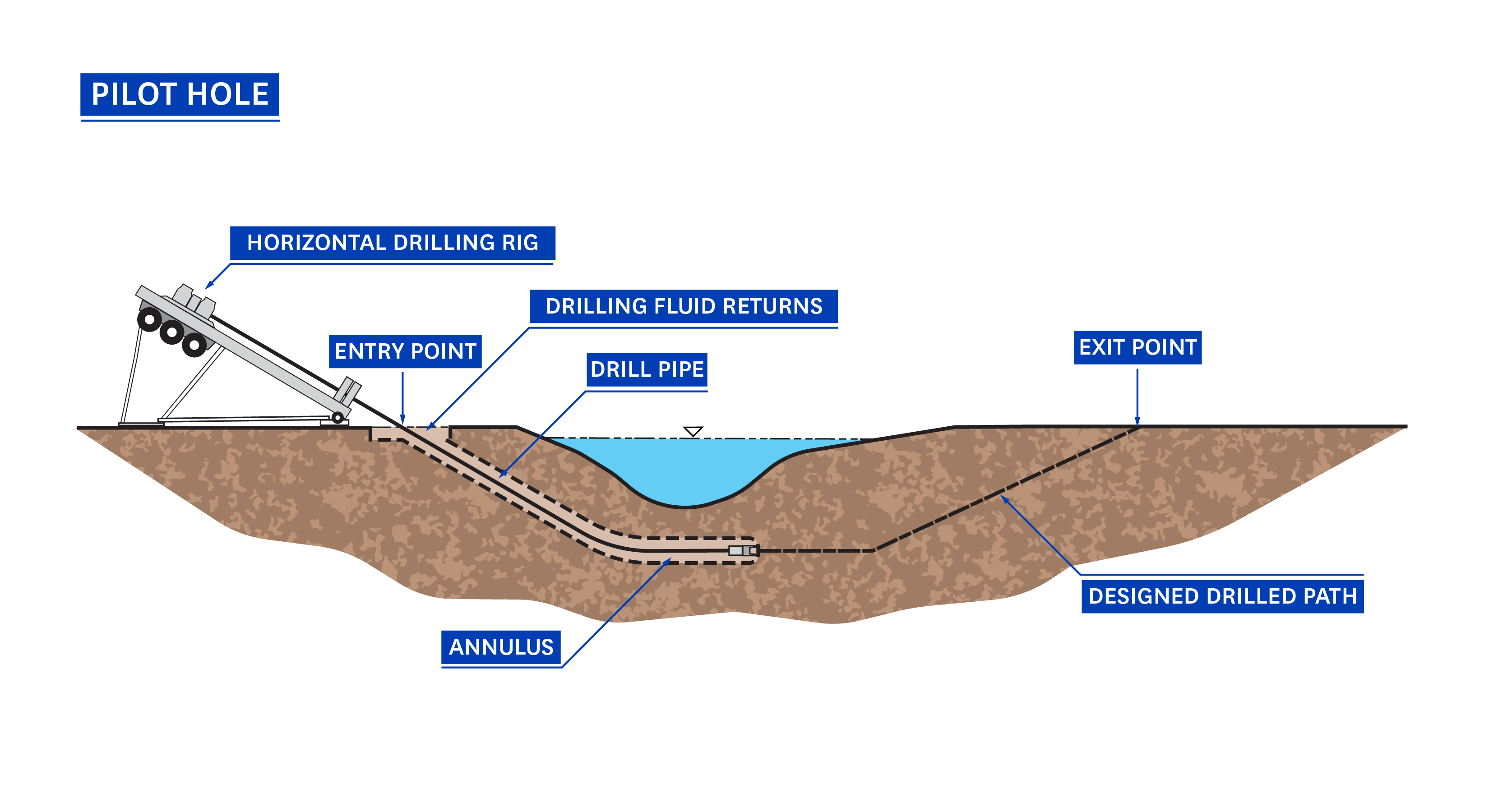
Length and Diameter
The length of the borehole and the diameter of the pipeline or conduit also influence the selection of entry and exit angles in HDD designs. Longer boreholes and larger diameter pipelines or conduits may allow lower entry and exit angles to achieve the desired curvature.
Equipment
The equipment used in an HDD project greatly affects the selection of entry and exit angles. Some equipment allows greater control over the drilling angle and can achieve tighter curves with lower entry and exit angles. For example, entry angles should generally be designed between 8° and 20°; however, drilling rigs are typically manufactured to operate at 10° to 12°. Similarly, exit angles generally range from 5° to 12° and should be designed to provide ease in the breakover support of the pull section.
Minimum Curvature Radius
Minimum curvature radius refers to the smallest radius achieved in the borehole without causing excessive stress or damage to the pipeline or conduit. While the minimum curvature radius is influenced by several factors, including the pipe diameter, wall thickness, and material properties, it is usually directly determined by the diameter and type of drill rods utilized for the initial bore. The design engineer must carefully evaluate these factors to ensure the minimum curvature radius is within acceptable limits. The selection of the minimum curvature radius in HDD designs depends on several factors, including the diameter of the pipeline or conduit, the type of material, and the soil conditions. The diameter of the pipeline or conduit directly affects the minimum curvature radius—the smaller the diameter, the tighter the bend radius that can be achieved without causing damage.
Material Selection
The material of the pipeline or conduit also affects the minimum curvature radius due to the difference in bending stiffness and allowable bending stress. For example, polyethylene pipes are more flexible and have larger allowable bending stress than steel pipes. The soil conditions also affect the minimum curvature radius in HDD designs. The soil’s stiffness and resistance to deformation influence the maximum allowable curvature that can be achieved without causing excessive stress or deformation of the pipeline or conduit. Hard and dense soils, such as rock formations, require larger minimum curvature radii, while soft and loose soils, such as sands and clays, allow for smaller minimum curvature radii. The design engineer must carefully evaluate the minimum curvature radius in HDD designs to ensure the safe and efficient installation of pipelines or conduits. The curvature of the borehole should be optimized to achieve the smallest minimum curvature radius possible without exceeding the allowable bending stress or causing damage to the pipeline or conduit. This can be achieved by selecting the appropriate entry and exit angles, pipeline or conduit material, and soil condition.
Installation and Operation Loads
The installation loads are another critical design pa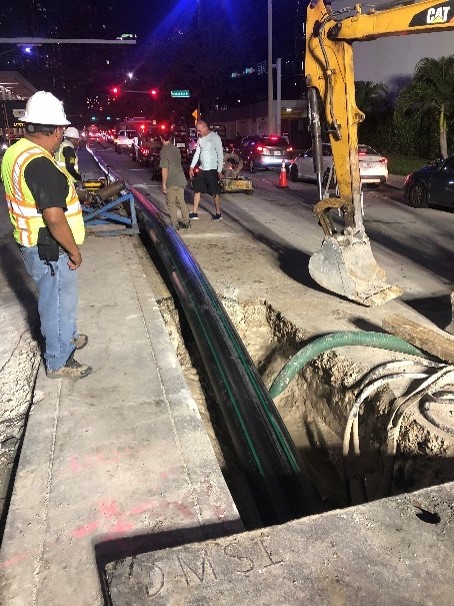 rameter that must be considered in HDD. These loads refer to the forces exerted on the pipeline or conduit during installation, such as tension, compression, and bending. The design engineer must evaluate the installation loads to ensure the pipeline or conduit can withstand them without damage. Factors such as soil type, depth, and groundwater conditions can also affect the installation loads and must be considered during the design phase. HDD installation loads should be calculated based on pipe materials, soil conditions, and boring depth to determine if a pipe specification is adequate. Installation stresses include tensile stress and bending stress. Operating loads imposed on a pipeline installed by HDD are also important to be evaluated, including internal pressure, bending, thermal expansion, and external pressures. CHA has developed a method to calculate these loads following the latest Pipeline Research Council International (PRCI) guidance document entitled “Installation of Pipelines by Horizontal Directional Drilling, An Engineering Design Guide.”
rameter that must be considered in HDD. These loads refer to the forces exerted on the pipeline or conduit during installation, such as tension, compression, and bending. The design engineer must evaluate the installation loads to ensure the pipeline or conduit can withstand them without damage. Factors such as soil type, depth, and groundwater conditions can also affect the installation loads and must be considered during the design phase. HDD installation loads should be calculated based on pipe materials, soil conditions, and boring depth to determine if a pipe specification is adequate. Installation stresses include tensile stress and bending stress. Operating loads imposed on a pipeline installed by HDD are also important to be evaluated, including internal pressure, bending, thermal expansion, and external pressures. CHA has developed a method to calculate these loads following the latest Pipeline Research Council International (PRCI) guidance document entitled “Installation of Pipelines by Horizontal Directional Drilling, An Engineering Design Guide.”
Pipe Material Selection
The choice of pipe material is a crucial design parameter for HDD. The type of material selected for the pipeline or conduit depends on several factors, including the anticipated loads, the soil conditions, and the expected service life of the pipeline. The design engineer must evaluate these factors to select a pipe material that can withstand the anticipated loads and environmental conditions. High-density polyethylene (HDPE) material, steel, polyvinyl chloride (PVC), and even ductile iron pipe (DI) are all viable options for an HDD design.
Construction Challenges
Staging Areas and Maintenance of Traffic (MOT)
Performing an HDD installation in congested urban 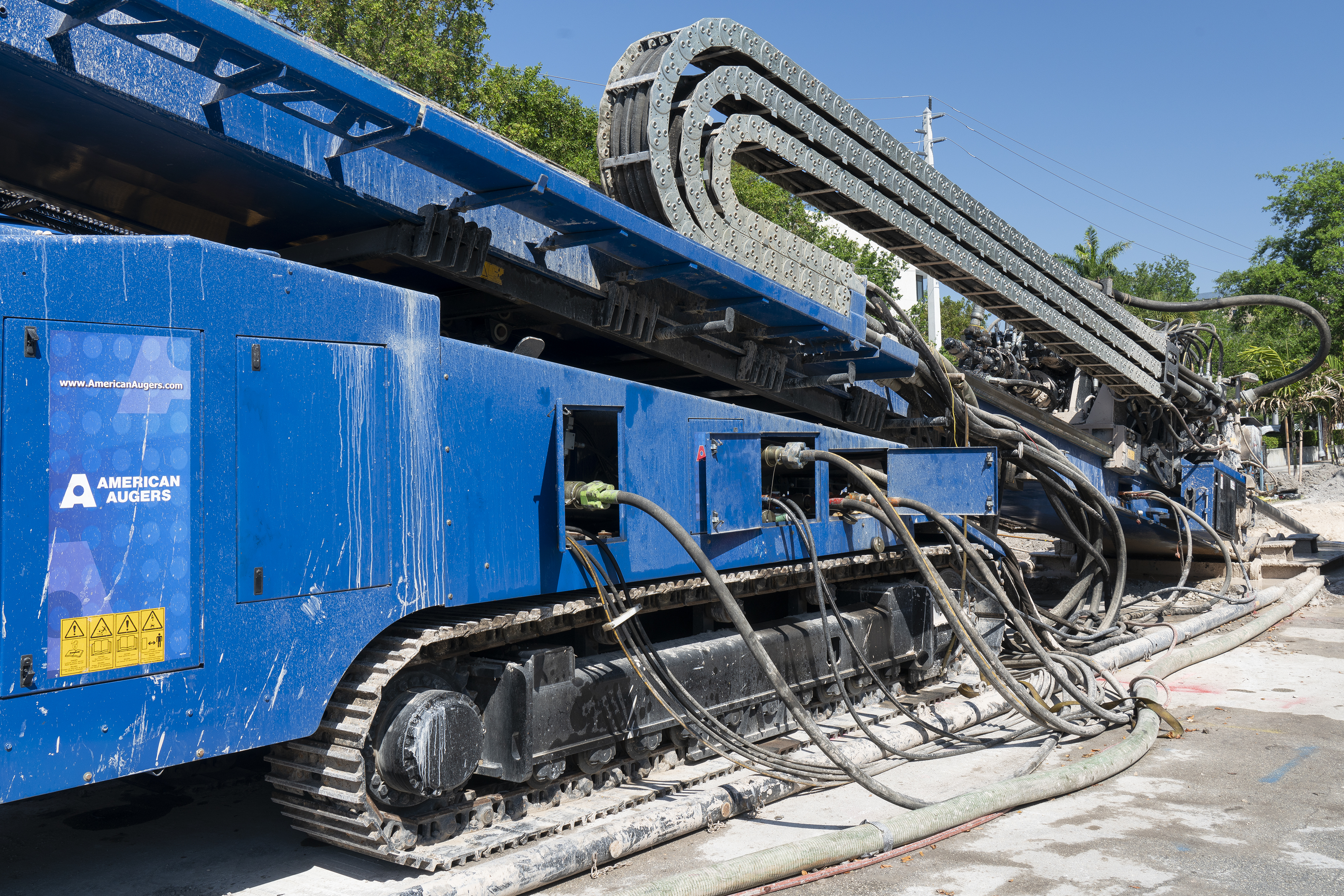 areas presents unique challenges for contractors, particularly regarding staging, mobilization, and maintenance of traffic (MOT) operations. Staging and mobilization are critical components of any HDD installation project. In an urban environment, it is essential to have a clear understanding of the project site and surrounding areas to determine the best location for staging and mobilization, not just for the most efficient operation and installation but for the safety of workers, pedestrians, and vehicular traffic. The traffic management plan (TMP) should include information on the timing of road closures, detours, lane shifts, and the duration of these closures. The TMP should also consider closure impacts for businesses and local residents and provide strategies to mitigate these impacts.
areas presents unique challenges for contractors, particularly regarding staging, mobilization, and maintenance of traffic (MOT) operations. Staging and mobilization are critical components of any HDD installation project. In an urban environment, it is essential to have a clear understanding of the project site and surrounding areas to determine the best location for staging and mobilization, not just for the most efficient operation and installation but for the safety of workers, pedestrians, and vehicular traffic. The traffic management plan (TMP) should include information on the timing of road closures, detours, lane shifts, and the duration of these closures. The TMP should also consider closure impacts for businesses and local residents and provide strategies to mitigate these impacts.
Geological Conditions
Unique geological conditions, such as highly porous limestone bedrock, underground karst formations, or extremely sandy soils, can present significant construction challenges for contractors performing HDD installations. Drilling through limestone bedrock can pose challenges due to its inherent hardness and density, resulting in heightened wear and tear on drilling equipment. Additionally, limestone can contain voids and pockets of air, which can create instability and cause the drill bit to deviate from its intended path. Another challenge associated with drilling is the presence of underground karst formations. Karst formations are created when limestone bedrock is dissolved by groundwater, resulting in the formation of underground caves, sinkholes, and other structures. These formations can be unpredictable and difficult to detect, posing a safety risk to drilling operations.
Conversely, at the opposite end of the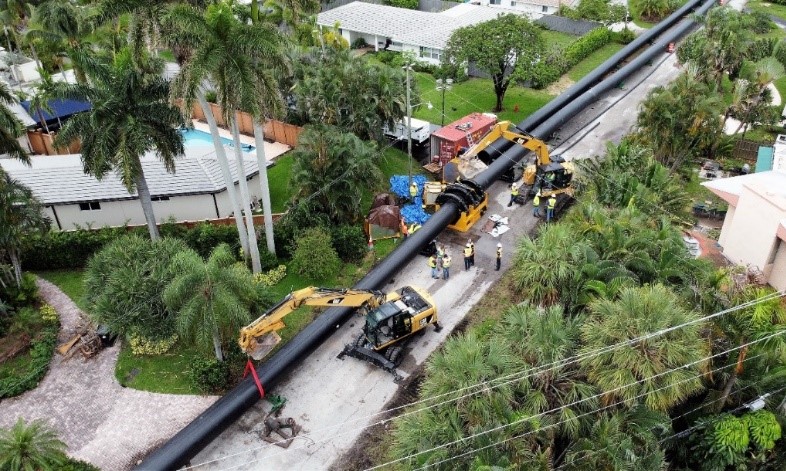 spectrum, we encounter the challenge of drilling in highly sandy soils and conditions, often prevalent in islands and coastal cities. Sandy soil conditions can pose significant challenges for HDD installations. Sandy soil tends to collapse and erode when subjected to the force of drilling fluids, making it difficult to maintain a stable borehole during the drilling process. This can result in borehole deviation, leading to costly re-drills and project delays. Sandy soils can also make it difficult to achieve proper fluid circulation during the drilling process, which can impact the performance of the drilling equipment and increase the risk of equipment failure.
spectrum, we encounter the challenge of drilling in highly sandy soils and conditions, often prevalent in islands and coastal cities. Sandy soil conditions can pose significant challenges for HDD installations. Sandy soil tends to collapse and erode when subjected to the force of drilling fluids, making it difficult to maintain a stable borehole during the drilling process. This can result in borehole deviation, leading to costly re-drills and project delays. Sandy soils can also make it difficult to achieve proper fluid circulation during the drilling process, which can impact the performance of the drilling equipment and increase the risk of equipment failure.
Hydraulic Fracture (Frac-out)
Hydraulic fracture, or frac-out, is a common challenge encountered during HDD installations. Frac-outs occur when drilling fluids are injected into the ground at a pressure that exceeds the strength of the surrounding soil, causing it to fracture and create a pathway for the fluid to escape to the surface. These conditions can give rise to a variety of problems, such as soil erosion, environmental damage, and delays in the project timeline.
Several factors can influence the occurrence of frac-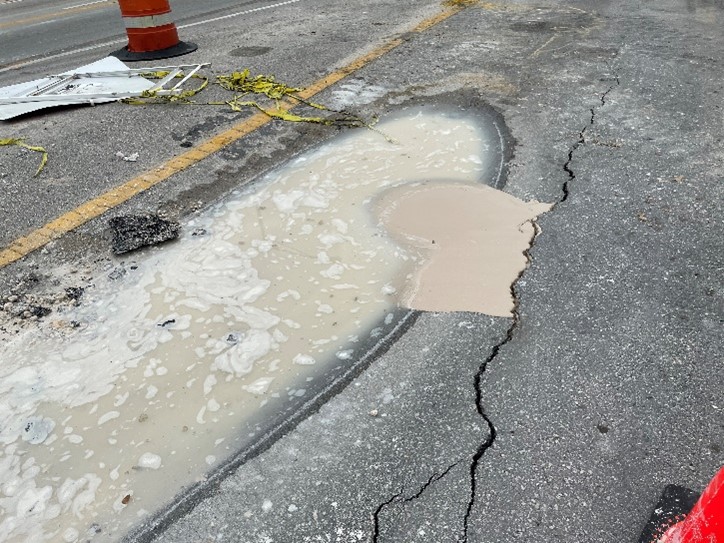 outs during an HDD installation. One key factor is the type of soil being drilled. Softer soils, such as clay or sand, are more prone to fracturing than harder, more consolidated soils, such as rock or shale. The size and shape of the borehole can also be a contributing factor, as larger and more intricate boreholes are harder to stabilize and have a higher likelihood of leading to frac-outs. Yet another factor contributing to frac-outs is the utilization of small or shallow entry and exit angles, which cause the bore to be installed with an extended section under minimal cover. This, in turn, creates a shorter path for drilling fluid to reach the surface.
outs during an HDD installation. One key factor is the type of soil being drilled. Softer soils, such as clay or sand, are more prone to fracturing than harder, more consolidated soils, such as rock or shale. The size and shape of the borehole can also be a contributing factor, as larger and more intricate boreholes are harder to stabilize and have a higher likelihood of leading to frac-outs. Yet another factor contributing to frac-outs is the utilization of small or shallow entry and exit angles, which cause the bore to be installed with an extended section under minimal cover. This, in turn, creates a shorter path for drilling fluid to reach the surface.
Crossing Rivers, Canals, and other Waterways
Performing an HDD installation that crosses environmentally sensitive waterways can present significant construction challenges. These waterways include lakes, rivers, wetlands, and other aquatic habitats home to various plant and animal species. A careful and measured approach to site preparation, drilling operations, and environmental management should be taken to minimize the impact of HDD installations on these environments.
One primary challenge is ensuring that drilling fluids and other construction materials do not contaminate the water or harm aquatic life. To address this challenge, contractors must carefully design their drilling plans to minimize the amount of drilling fluid and other materials that come into contact with the water. This may include using specialized drilling fluids and equipment designed to be environmentally friendly, as well as implementing measures to capture and treat any drilling fluids that come into contact with the water.
Another challenge is properly managing construction on aquatic habitats. This includes managing noise levels and vibration to prevent harm to fish and other marine life and initiatives to safeguard sensitive habitats and avoid erosion and sedimentation.
Featured Pipeline Project Saved by HDD
54-inch HDPE Redundant Bypass Force Main Horizontal Directional Drill
In December 2019, the City of Fort Lauderdale’s wastewater system suffered a catastrophic failure of its primary force main, which delivered the city’s wastewater flows to the George T. Lohmeyer Treatment Plant. This failure was followed by several other failures and breaks in the aging sewer system. Over 211 million gallons of raw sewage spilled into the waterways.
The sewer spill was devastating for the Fort Lauderdale community and particularly for the city’s waterways and environmentally sensitive areas. CHA’s team was prepared to tackle the enormous scope of this project, which included the installation of 38,000 linear feet of 48” and 54” HDPE pipe using horizontal directional drill technology. Sections were drilled under a golf course and crossed three waterways without environmental or public disruption.
The high-profile nature of this project resulted in considerable public involvement at all stages. The project also required a rigorous permitting process involving 11 jurisdictional agencies, including several environmental agencies. Segmental certification was also required to activate and allow city use of the installed force main as quickly as possible. Due to the nature of this design/build delivery and project emergency status, our team was extremely flexible and ready to take on any scope of changes requested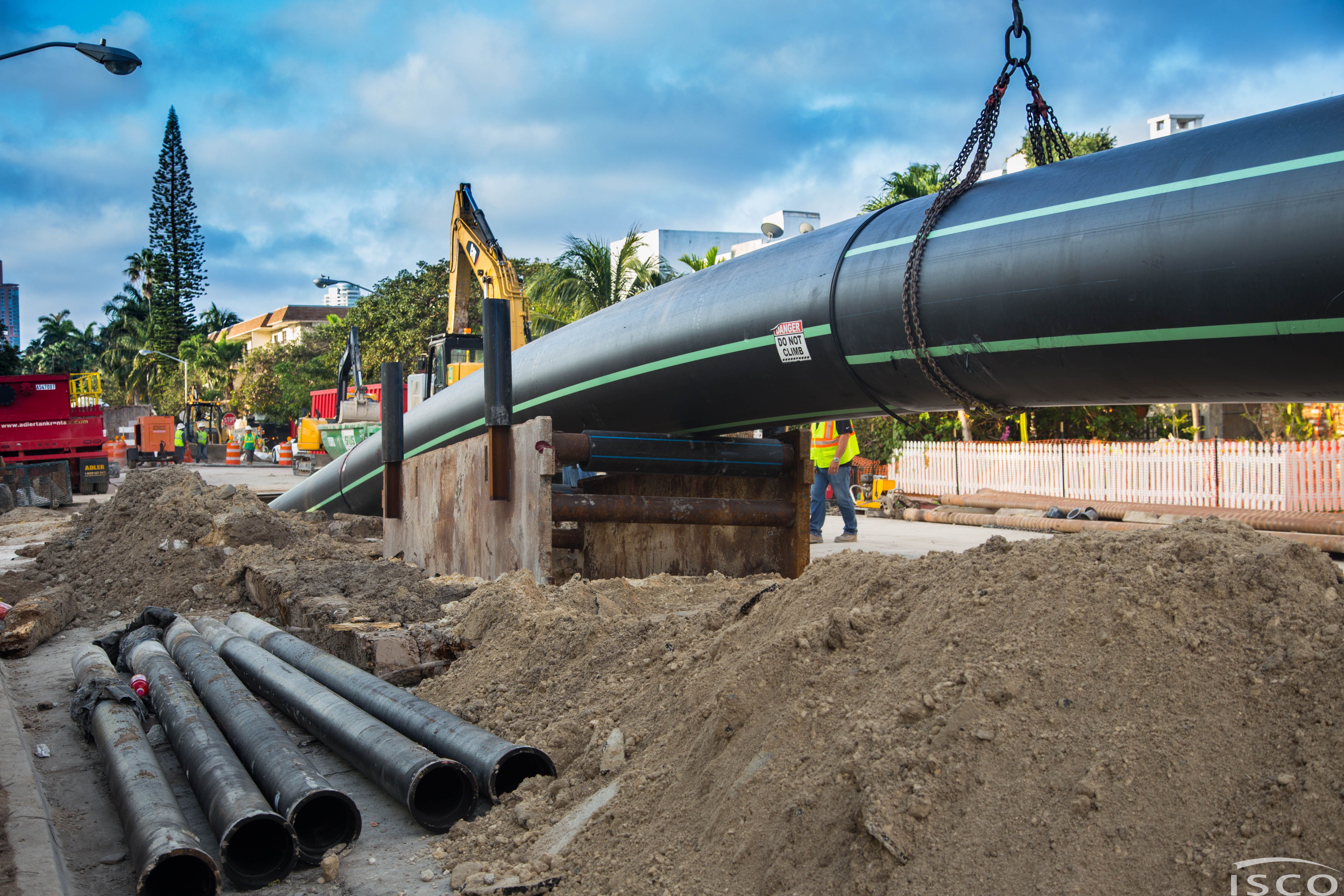 by the city or as demanded by emerging field conditions.
by the city or as demanded by emerging field conditions.
Completed in just 18 months, the extremely expedited design and installation of the thousands of linear feed of bypass force main ensured that the City of Fort Lauderdale’s wastewater infrastructure was restored and protected against future failure and system interruption.
Using HDD in Your Next Project
When designed properly, HDD is an efficient, cost-effective, and sustainable method when installing underground pipelines, cables, and conduits. It has become essential, particularly in environmentally sensitive or high-traffic areas. However, it’s important to consider all the associated challenges and factors to ensure constructability, feasibility, and project safety.
CHA’s Experience
Over the last 10 years, CHA has designed and installed over 120,000 LF of pipe using HDD as part of 35 projects. Our experience designing pipelines has resulted in adopting several design characteristics as standards for effective designs. These include best entry and exit pit locations, optimum entry and exit angles, acceptable bending radii, and feasible pipe materials and dimension ratio (DR).